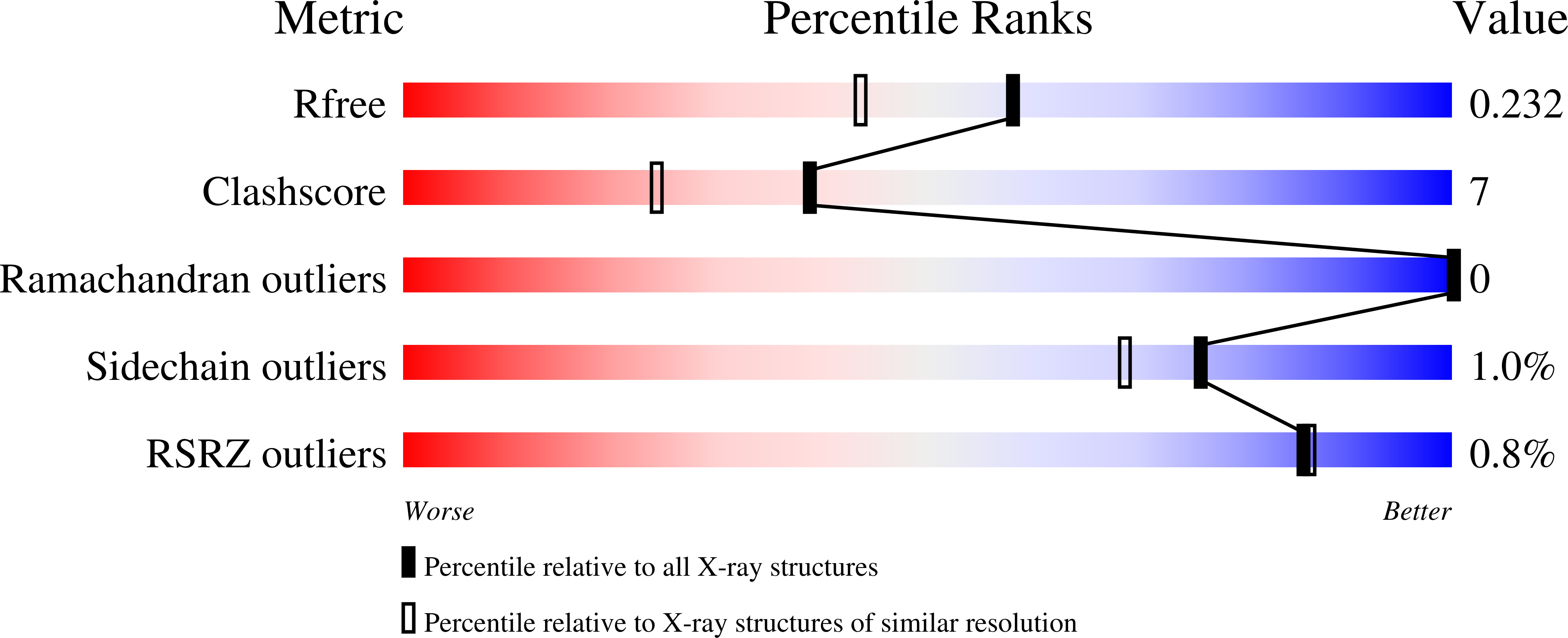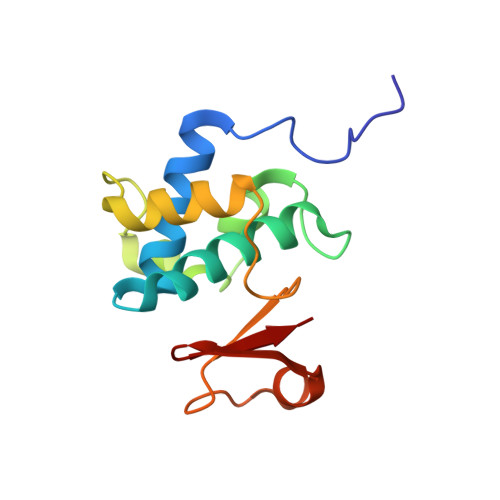Crystal Structure of the Catalytic Domain of the Bacillus cereus SleB Protein, Important in Cortex Peptidoglycan Degradation during Spore Germination.
Li, Y., Jin, K., Setlow, B., Setlow, P., Hao, B.(2012) J Bacteriol 194: 4537-4545
- PubMed: 22730118
- DOI: https://doi.org/10.1128/JB.00877-12
- Primary Citation of Related Structures:
4F55 - PubMed Abstract:
The SleB protein is one of two redundant cortex-lytic enzymes (CLEs) that initiate the degradation of cortex peptidoglycan (PG), a process essential for germination of spores of Bacillus species, including Bacillus anthracis. SleB has been characterized as a soluble lytic transglycosylase that specifically recognizes spore cortex PG and catalyzes the cleavage of glycosidic bonds between N-acetylmuramic acid (NAM) and N-acetylglucosamine residues with concomitant formation of a 1,6-anhydro bond in the NAM residue. We found that like the full-length Bacillus cereus SleB, the catalytic C-terminal domain (SleB(C)) exhibited high degradative activity on cortex PG in vitro, although SleB's N-terminal domain, thought to bind PG, was inactive. The 1.85-Å crystal structure of SleB(C) reveals an ellipsoid molecule with two distinct domains dominated by either α helices or β strands. The overall fold of SleB closely resembles that of the catalytic domain of the family 1 lytic transglycosylases but with a completely different topological arrangement. Structural analysis shows that an invariant Glu157 of SleB is in a position equivalent to that of the catalytic glutamate in other lytic transglycosylases. Indeed, SleB bearing a Glu157-to-Gln mutation lost its cortex degradative activity completely. In addition, the other redundant CLE (called CwlJ) in Bacillus species likely has a three-dimensional structure similar to that of SleB, including the invariant putative catalytic Glu residue. SleB and CwlJ may offer novel targets for the development of anti-spore agents.
Organizational Affiliation:
Department of Molecular, Microbial and Structural Biology University of Connecticut Health Center, Farmington, Connecticut, USA.

















